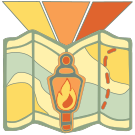Body Scanning: Difference between revisions
imported>Jacob Robertson No edit summary |
No edit summary |
||
| Line 1: | Line 1: | ||
{{Under construction|Additional content and cleanup needed.}} | |||
== The Concept == | == The Concept == | ||
Body Scanning is one of the most common Mindful practices. As such, there are many resources available on this subject which don't need to be repeated here. See [[Body Scanning#Resources|Resources]] below. | Body Scanning is one of the most common Mindful practices. As such, there are many resources available on this subject which don't need to be repeated here. See [[Body Scanning#Resources|Resources]] below. | ||
Revision as of 14:56, 31 August 2023
| This page is under construction Additional content and cleanup needed. |
The Concept
Body Scanning is one of the most common Mindful practices. As such, there are many resources available on this subject which don't need to be repeated here. See Resources below.
Muscle Relaxation
Muscle Relaxation is an easy and powerful way to practice doing a body scan, which brings you immediately into the present, while reminding you of the arbitrary nature of how you perceive your sensory input. Just like Body Scanning, it can be done anytime you're sitting down for a while... While waiting for the dentist, or watching TV, or when you're in a meeting. Muscle Relaxation tends to be active and physical, whereas Body Scanning is more typically done without judgement. When doing any of these exercises, make use of the following.
- Every muscle you relax can always be relaxed even more. Make multiple passes until you lose all sense that your body part has any sensation or connection to you at all.
- Mentally explore muscle groups, looking for new ways to relax them. Discover new muscle areas that are connected to the area under focus.
- Do a full body scan regularly, searching and exploring for new areas that you could relax. Sometimes you can relax an area that has no muscles, simply by letting go, or perhaps by finding which muscles are connected or related.
- Anytime you are "at rest" is an opportunity for a general body scan, either casually or with more focus and attention.
Muscle Relaxation Exercises
- Numb hands - Choose one part of your body, a good example is your hands. Scan your hands over and over again, relaxing them more and more until your hands actually go numb. You can do this for you whole body.
- Your Head Area - At any moment, become aware of the tension you are holding in your head, neck, and shoulders. You will find you nearly always have some tension there. Practice noticing that frequently, and take the time to relax the following common areas.
- Jaw
- Eyes - muscles around the eye, the focus of the eye itself, and the deeper muscles within the socket
- Breath - how are you breathing? Are you holding your breath without knowing it. Relax your breathing and allow it to be effortless and continual.
- Scalp - practice relaxing your entire hair/scalp area. Although there is no obvious muscle group there, you will find you can do this.
- Neck
- Shoulders
- Inside Your Mouth - notice each muscle and each body part, how they are connected, how they are related to your breath, and how there are "open" and "closed" feelings to your mouth and throat as a whole.
- Your tongue is a very active part of your mouth, practice relaxing it frequently.
- Your throat is very perceptible all the way from the opening, down through your neck. Notice the breath in it, and see how relaxing your throat, or even gently "opening" your throat changes your breath and your overall sense of mood or quality of the moment.
General Exercises
- Hands - your hands are an incredibly important part of your life, being used constantly throughout the day for each essential task.
- TODO - shape, position, fingertips, etc.
